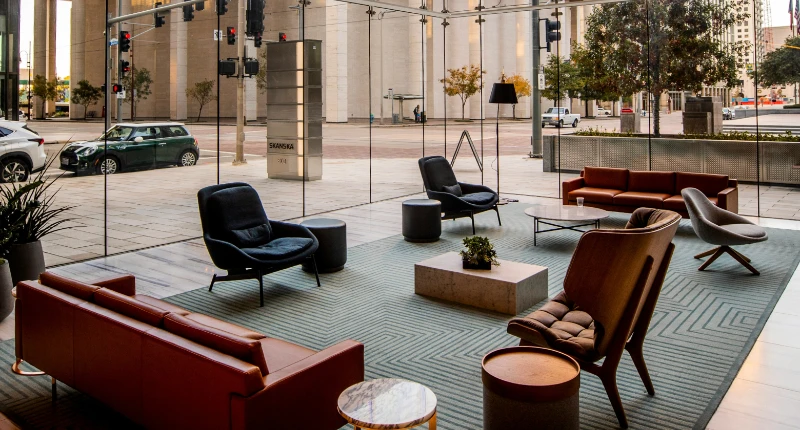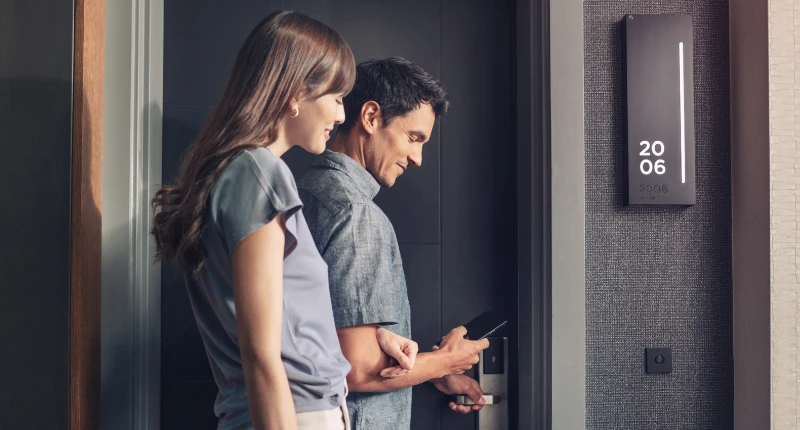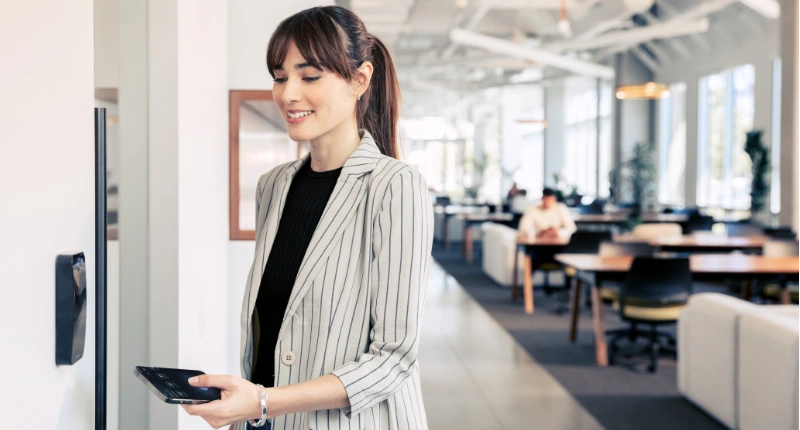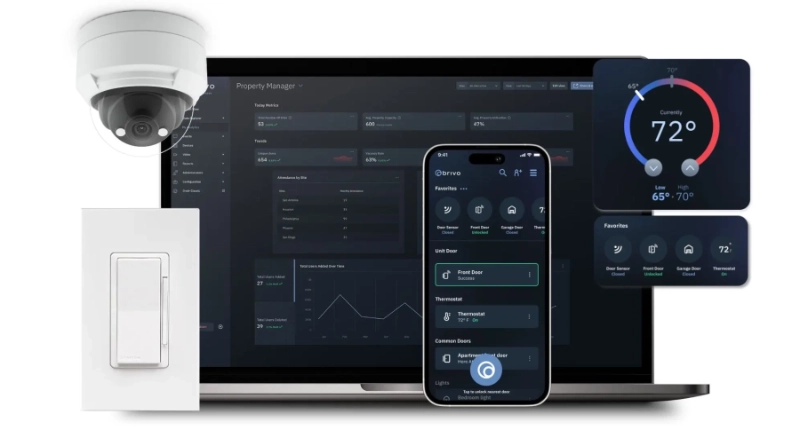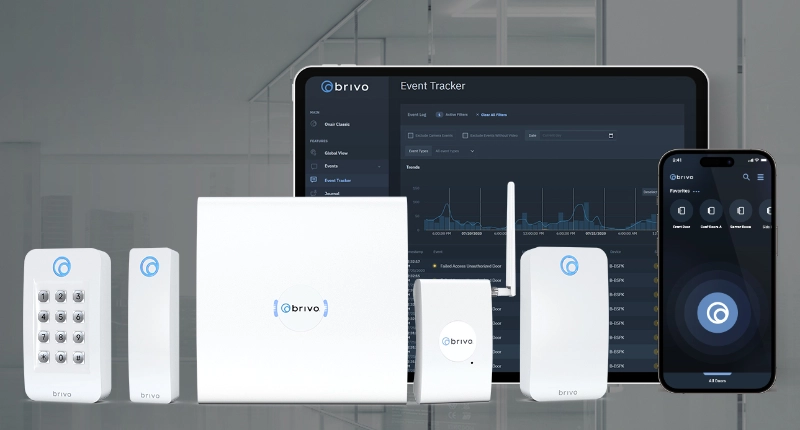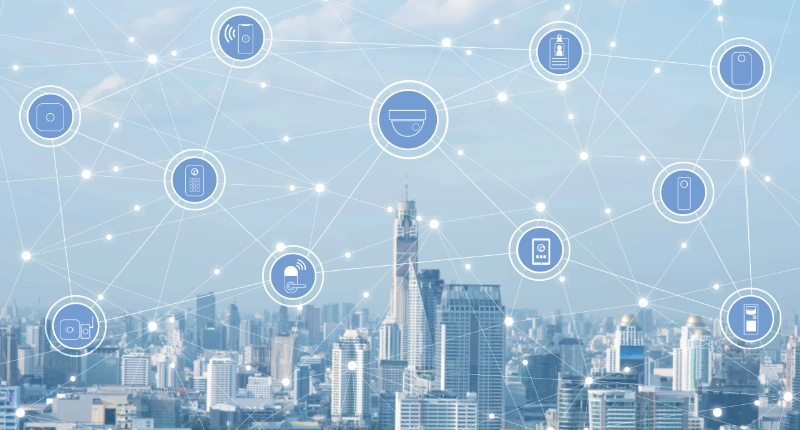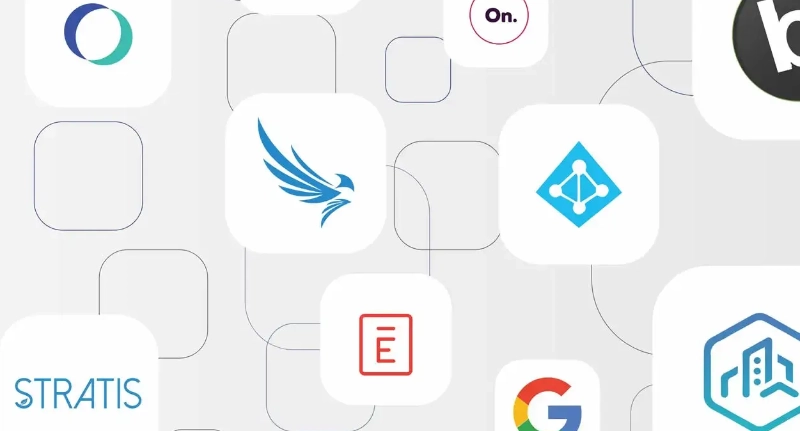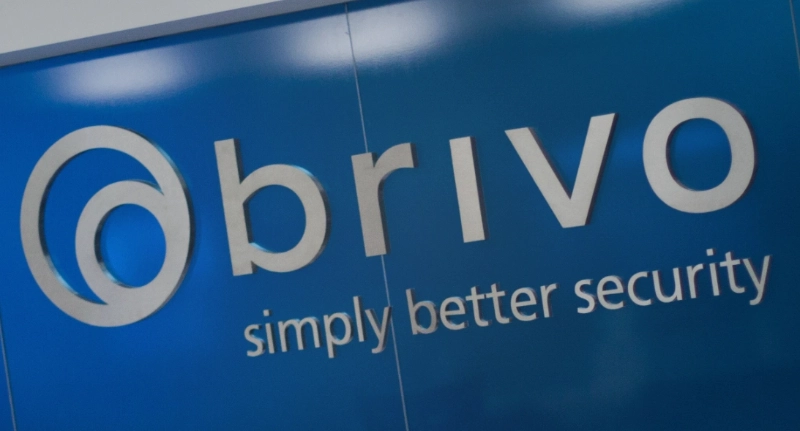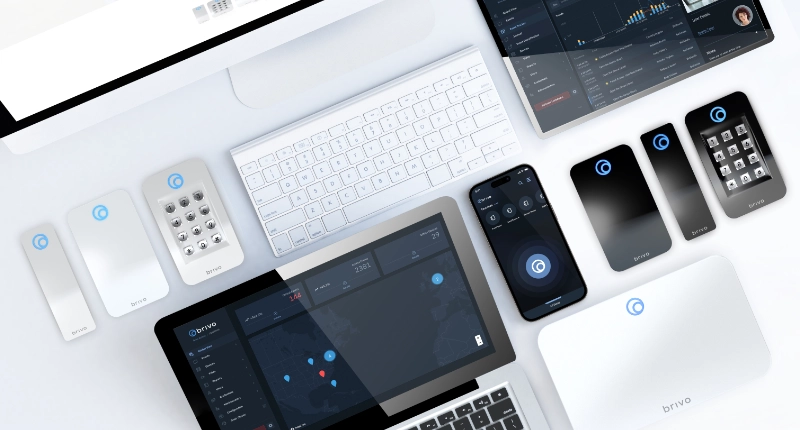The tools and technologies used to secure living spaces are constantly evolving, as are residents’ expectations for more convenient features and amenities. This raises an important question for property managers: how can they meet residents’ expectations while providing the enhanced security they need?
To explore this balance, Bisnow hosted a discussion featuring Lee Miller, Brivo’s Senior Director of Multifamily; Lisa Moore, Director of Design at JPI; and Amanda Durkee, Property Manager at ZRS Management. Together, they shared insights into how they’re navigating these challenges and the technology that’s shaping the future of multifamily living.
Balancing Security And Evolving Expectations In Multifamily
So, where should properties begin? Security should always be the foundation, but with the right technologies, access can evolve into a seamless experience for both residents and property staff.
According to Lisa Moore, Director of Design Innovation at JPI Companies, who leads the integration of building technology to enhance the multifamily resident experience, access control is the top request from residents. They want an effortless way to get in and out of the building and shared spaces, emphasizing the growing demand for convenience alongside security.
And it’s not just about convenience for residents. Amanda Durkee, Property Manager at ZRS, emphasized that today’s residents expect seamless access for themselves, their families, and their trusted service providers like housekeepers, dog walkers, and delivery drivers. They want this round-the-clock convenience paired with the reassurance of security and safety in their homes.
That’s where solutions like temporary PIN codes, QR codes, and other traceable access methods come into play. These tools provide residents with the flexibility they desire while giving property teams greater control and visibility over who enters the property.
Adding PIN codes into the mix for access also gives residents flexibility in how they enter their spaces. Some may prefer a single mobile app to access everything, while others opt for a fob or PIN code. This flexibility is crucial in ensuring new technological assets don’t quickly become annoyances.
“The future of the space is offering options,” said Lisa. Amanda echoed this sentiment, sharing an example of how access solutions need to accommodate everyone—including minors who may not have smartphones.
The benefits of these technologies extend to property teams as well. With remote access capabilities, property managers can efficiently manage access rights for staff, residents, and vendors across their properties, freeing them up to focus on more essential tasks.
For example, the ability to share temporary access eliminates the need to personally escort vendors, like plumbers, to specific areas such as a boiler room. Instead, property teams can grant access tailored to individual needs and schedules, with the added assurance that the system tracks who accessed what and when. This same level of control applies to unit doors, offering greater oversight of popular services.
Remote monitoring and centralized management become even more powerful when integrated with systems like video surveillance. Property teams can track access events and link them to video footage from a single platform, providing a complete view of activity. This integration enhances security and streamlines incident response, giving teams the tools they need to act quickly should an incident arise.
Leveraging Technology And Data To Meet Resident And Property Needs
What quickly became clear from the panel discussion was that achieving the level of convenience residents want, while maintaining the right balance of security, requires the right technology—and it’s not a one-size-fits-all solution.
“I’m not about to tell Lisa Moore of JPI what her residents want,” said Lee. His approach isn’t about prescribing a standard security solution, but about providing properties with the systems and tools they need to manage their spaces in a way that works best for them. Lee encourages clients like Amanda and Lisa to come to him with the specifics of their location, site needs, and vision from an amenity perspective, recognizing that each property has unique requirements.
That’s the beauty of Brivo’s solution: it’s open and adaptable to a wide range of needs. Whether it’s integrating an amenity booking app that allows residents to reserve spaces and access them through Brivo-controlled doors, or setting up an integration to alert the property team about roof jumpers (yes, that’s a real example discussed in the webinar!), Brivo may not offer out-of-the-box solutions, but its software is designed to empower users to manage their properties their way. According to Lisa, the flexibility of an open platform is essential to JPI’s business. “We want to put in hardware that has the most integrations with different software and applications out there. That way, when we hand over our assets, we’re not requiring our investors and their property management companies to use something that doesn’t work or coordinate with, or integrate with, their software that they plan to use on the property management or asset management side.”
Another perk of an open, cloud-based platform for multifamily properties is the easy access to data across the property. This centralization provides property managers with an unbiased view, allowing them to manage buildings more efficiently. It also enables them to adapt and evolve in response to changing resident expectations.
Take, for example, a private bowling alley. While it may seem like a crowd-pleaser, what does the data say? Is it being used frequently enough, or does that space need to be repurposed to meet residents’ evolving needs? Similarly, a 24/7 gym might be a resident favorite, but how do you ensure it stays clean and well-maintained? Occupancy trends can reveal slower times, enabling property managers to schedule cleaning and maintenance during off-peak hours, without disrupting residents’ use of the space.
For insights into how Lisa and Amanda prioritize investments, streamline updates with cloud-based solutions, and the lessons learned from adopting new technologies, watch the full recording. Then, discover how Brivo’s innovative solutions can transform your property management approach, creating safer, smarter communities that are equipped to meet the evolving needs of both residents and property teams.
